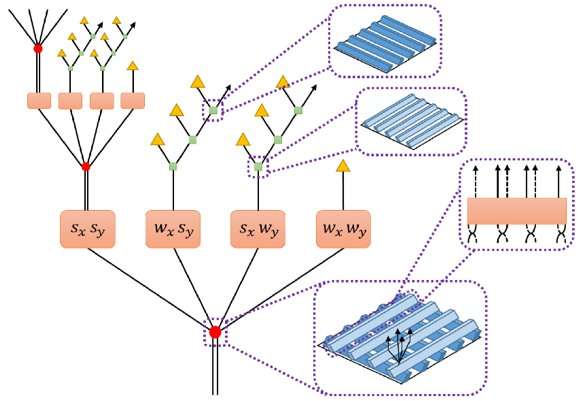New input for quantum simulations

An international group of researchers, including UvA physicist Michael Walter, have devised new methods to create interesting input states for quantum computations and simulations. The new methods can be used to simulate certain electronic systems to arbitrarily high accuracy. The results were published in the leading journal Physical Review X this week.
When we think of information, we often think of classical computer bits: devices that can store either a '0' or a '1' and that can be manipulated to do computations. Recently, however, physicists are becoming more and more interested in quantum information theory, where the basic units of information are quantum bits, or qubits for short. Qubits—tiny spinning electrons, for example—have two properties that make them even more interesting than their classical counterparts. First of all, they don't have to be in exactly the '0' or '1' state (spinning clockwise or counterclockwise, for example), but they can be in more complicated superpositions, something like 'having a 30% probability of spinning clockwise and 70% of spinning counterclockwise'. In addition, qubits can share information with one another: the probabilities for one qubit can depend on the probabilities for another qubit (in physics language, the qubits are entangled).
Simulating quantum physics
Together, these two properties make quantum information much more flexible and potentially much more powerful than classical information. Quantum computers, for example, can do computations that we do not know how to perform using ordinary computers even if we had billions of years of computing time—the famous example being code cracking through the prime factorization of large numbers. But quantum computers are not only useful for solving mathematical problems; they can also be very useful for physicists. Simulating quantum systems, for example, is quite elaborate in an ordinary computer. By their very nature, future quantum computers will be much more well-equipped to do such simulations.
Recent progress in understanding the physics of quantum information has led to novel methods to simulate quantum physics, both on existing classical computers and on future quantum computers. Crucial to these developments are operational procedures to prepare interesting quantum states that could serve as the input for these computations and simulations. One particularly exciting goal is, for example, to describe the physical properties of systems of electrons. Electronic properties are important both for chemistry and for materials science, but these properties have turned out to be very hard to calculate using traditional methods.
An international group of researchers has now made significant progress on this issue. Among them is UvA physicist Michael Walter, currently an assistant professor at the QuSoft institute in Amsterdam, and formerly a postdoctoral researcher at Stanford, where a large part of his work was carried out.
Walter and his colleagues have drawn on insights from many-body physics, quantum information science, and signal processing to derive novel preparation procedures for several non-trivial quantum states. The results take the form of "quantum circuits", which are sequences of physical operations that prepare a state of interest from a simple initial state. The paper in particular considers a class of metallic states which have proven challenging to address because of their high degree of quantum entanglement. Through their methods, the researchers have now succeeded in giving preparation procedures for these states.
The new results, which were published in Physical Review X this week, are noteworthy because the methods do not only appear to work; the authors can actually prove mathematically that they must work. The results form a stepping stone for future quantum computations: the paper's techniques will plausibly serve as a key element in addressing more complex electronic states which include the effects of electron interactions.
More information: Jutho Haegeman et al. Rigorous Free-Fermion Entanglement Renormalization from Wavelet Theory, Physical Review X (2018). DOI: 10.1103/PhysRevX.8.011003
Journal information: Physical Review X
Provided by University of Amsterdam




















